

Canada Day Scavenger Hunt - July 2020
| With most of the Canada Day celebrations cancelled this year, we enjoyed a scavenger hunt leading us on a 3 hour walk around town instead. The scavenger hunt was designed by Canadian Heritage and it was surprisingly fun and engaging. It made us look around much more closely while walking the usual streets where we always walk! |
|
Our Walking Route. Looking for the 10 scavenger hunt items brought us around Ottawa and Hull on the other side of the river. |
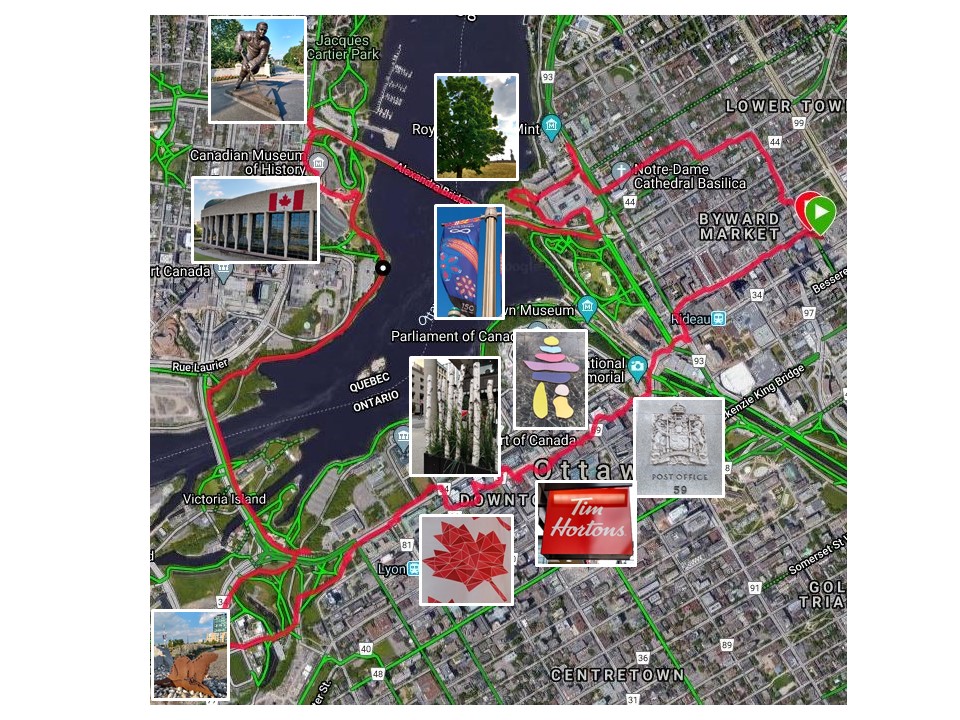
|
|
The Scavenger Hunt. Here are all the 10 images we chose for the hunt, on the worksheet prepared by Canadian Heritage. We took a few more photos below. |
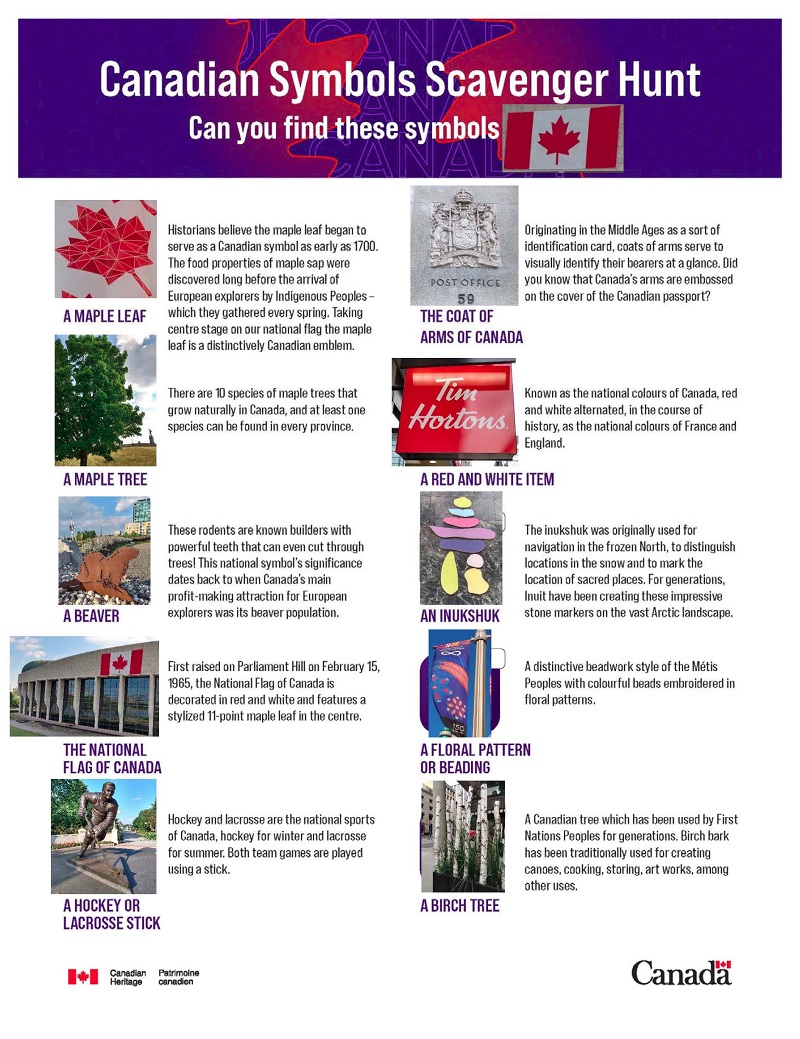
|
|
A Maple Leaf. Historians believe the maple leaf began to serve as a Canadian symbol as early as 1700. The food properties of maple sap were discovered long before the arrival of European explorers by Indigenous Peoples – which they gathered every spring. Taking centre stage on our national flag the maple leaf is a distinctively Canadian emblem. We found three different maple leaves: 1. Modern maple leaf design at Bank of Canada 2. Decorative flag for Ontario along Sussex Drive outside the Royal Canadian Mint 3. Maple leaf design for the Canadian Mint on Sussex Drive. |
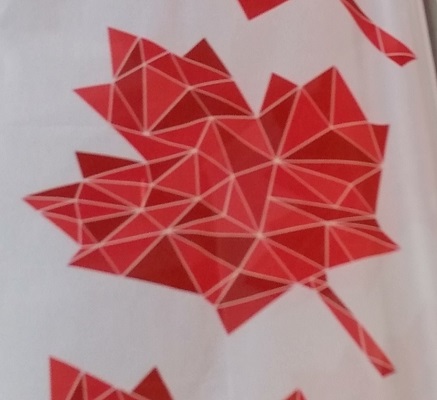
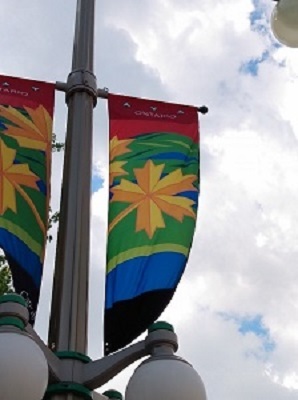
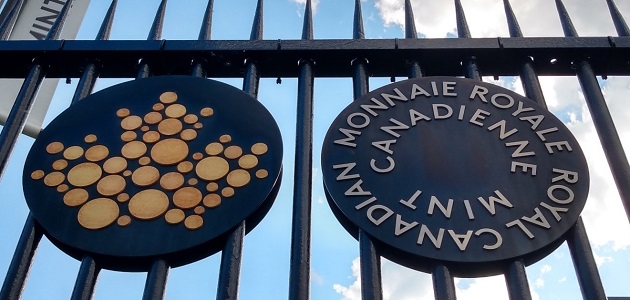
|
|
A Maple Tree. There are 10 species of maple trees that grow naturally in Canada, and at least one species can be found in every province. We picked two different maple trees: 1. Maple tree at the entrance of Montmartre Condominium on Guigues Avenue. 2. Maple tree at Nepean Point with Champlain with his astrolabe in the background. |
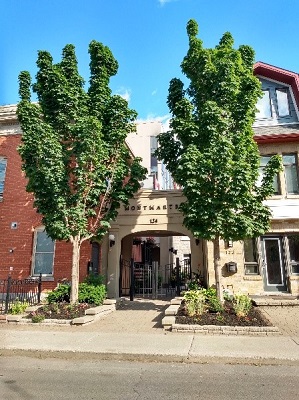
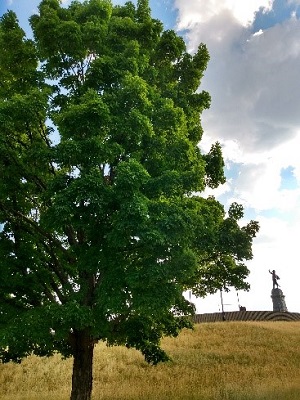
|
|
A Beaver. These rodents are known builders with powerful teeth that can even cut through trees! This national symbol’s significance dates back to when Canada’s main profit-making attraction for European explorers was its beaver population. We picked three different beavers - and we didn't have the patience to wait for a real one: 1. Beaver at Lebreton Flats park. 2. Beaver on a decorative flag for Manitoba. 3. Groundhog + BeaverTail = almost-a-beaver. Groundhog as seen wandering around on Parliament Hill. BeaverTails pastry as available in the Byward Market. |
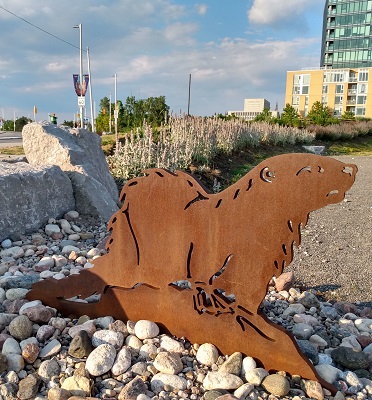
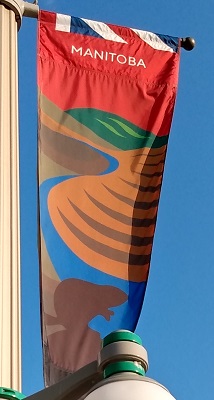 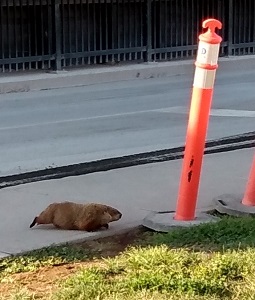
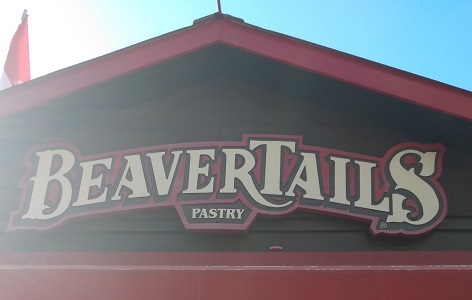
|
|
The National Flag of Canada. First raised on Parliament Hill on February 15, 1965, the National Flag of Canada is decorated in red and white and features a stylized 11-point maple leaf in the centre. We picked the biggest Canadian flag we could find - the one on the Canadian Museum of History in Hull, Gatineau, Quebec. |
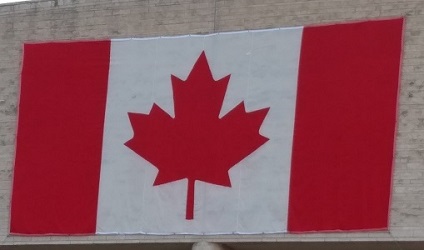
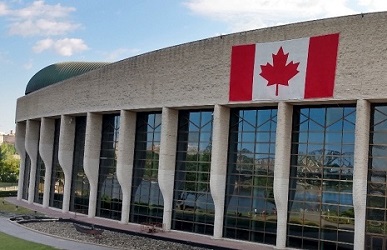
|
|
A Hockey or Lacross Stick. Hockey and lacrosse are the national sports of Canada, hockey for winter and lacrosse for summer. Both team games are played using a stick. We went to visit Maurice "Rocket" Richard's statue at Jacques Cartier Park, Hull, Gatineau. And then we found the oversized hockey puck next to the Lord Stanley Monument. |

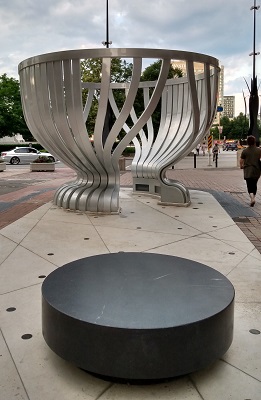
|
|
The Coat of Arms of Canada. Originating in the Middle Ages as a sort of identification card, coats of arms serve to visually identify their bearers at a glance. Did you know that Canada’s arms are embossed on the cover of the Canadian passport? Since we don't have Canadian passports, we had to look for alternatives. We found three: 1. at corner of Lyon and Wellington Street by the veterans' memorial 2. at the Post Office at 59 Sparks Street 3. at the Supreme Court of Canada on Wellington Street |
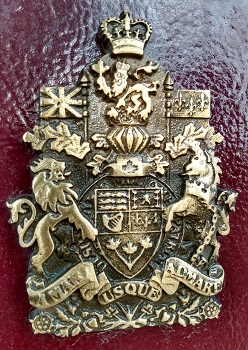
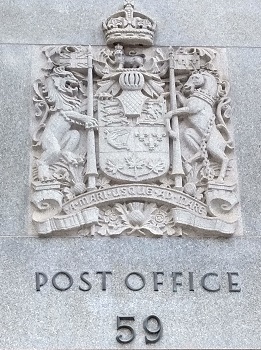
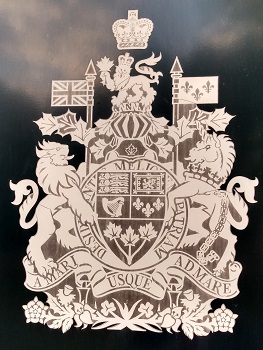
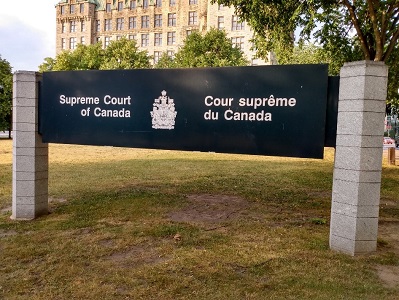
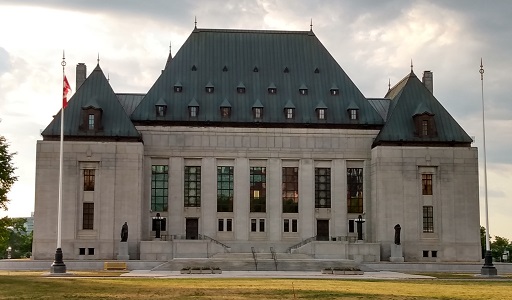
|
|
A Red and White Item. Known as the national colours of Canada, red and white alternated, in the course of history, as the national colours of France and England. We found three examples that remind us of Canada: 1. Tim Hortons on Sparks Street. 2. Flowers at Jacques Cartier Park, Hull, Gatineau. 3. Road works bollards on Alexandra interprovincial bridge between Ottawa and Hull. |
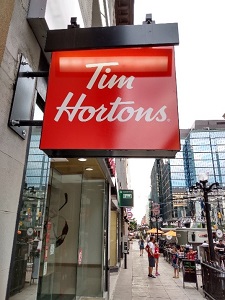
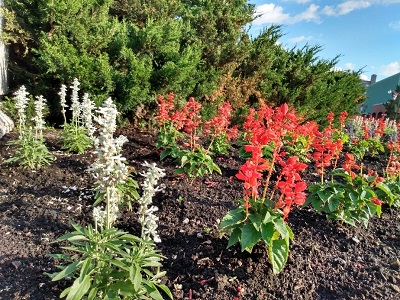
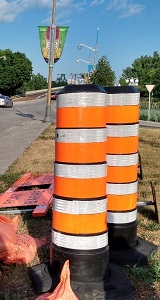
|
|
An Inukshuk. The inukshuk was originally used for navigation in the frozen North, to distinguish locations in the snow and to mark the location of sacred places. For generations, Inuit have been creating these impressive stone markers on the vast Arctic landscape. We picked three examples: 1. at Canada's Four Corners souvenir store on Sparks Street. 2. on the flag of Nunavut, flying over the Canadian Museum of History. 3. on a decorative flag for Nunavut. |
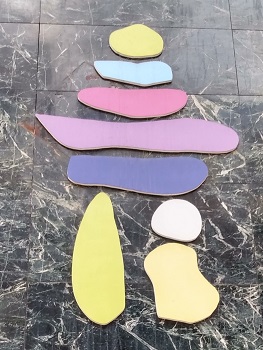
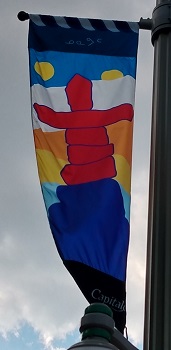
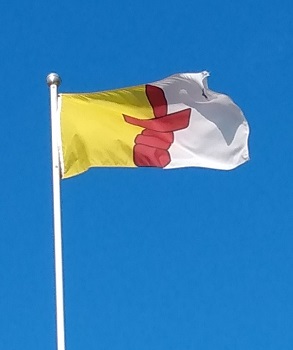
|
|
A Floral Pattern or Beading. A distinctive beadwork style of the Métis Peoples with colourful beads embroidered in floral patterns. This was a difficult one and we picked a decorative flag for the Metis Nation. |
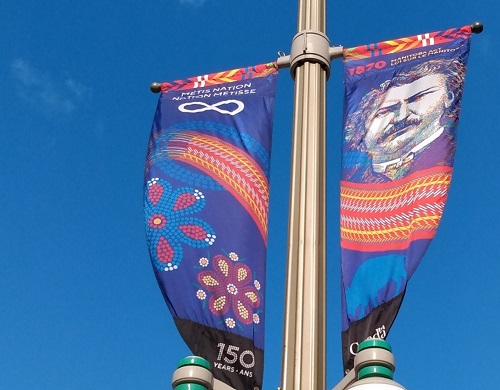
|
|
A Birch Tree. A Canadian tree which has been used by First Nations Peoples for generations. Birch bark has been traditionally used for creating canoes, cooking, storing, art works, among other uses. We picked three different trees: 1. Partial birch trees at The 3 Brewers on Sparks Street. 2. Birch tree on Voyageurs Pathway near Portage Bridge in Hull, Gatineau, Quebec. 3. Stylized birch tree on Nepean Point overlooking the Parliament. |
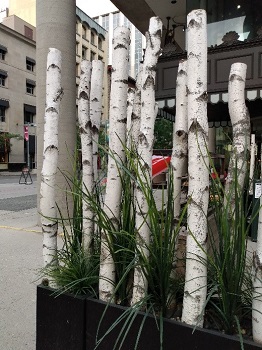
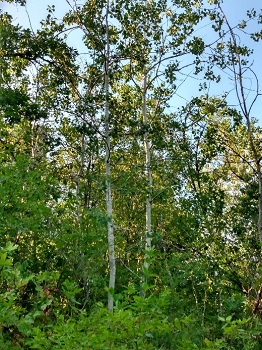
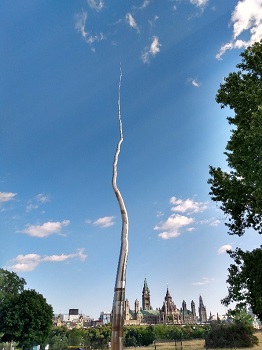
|
July 2020

